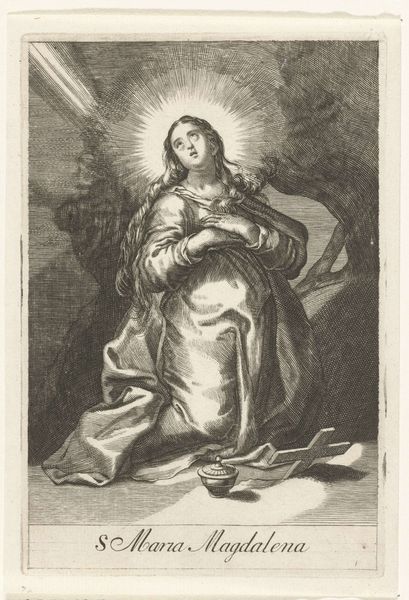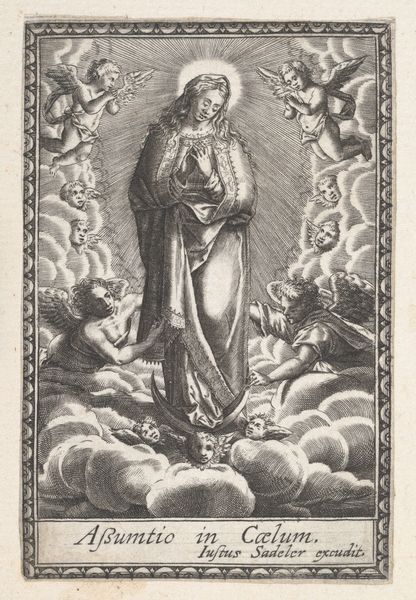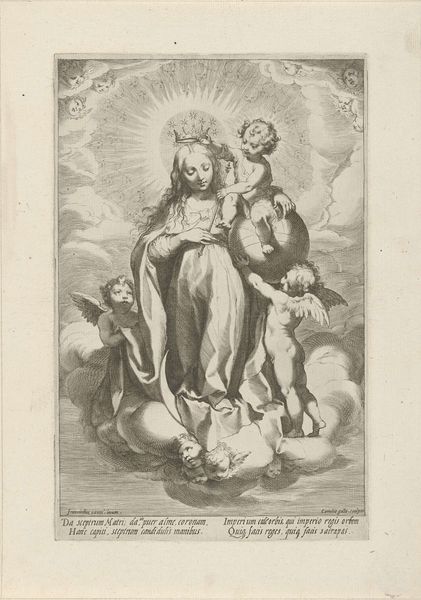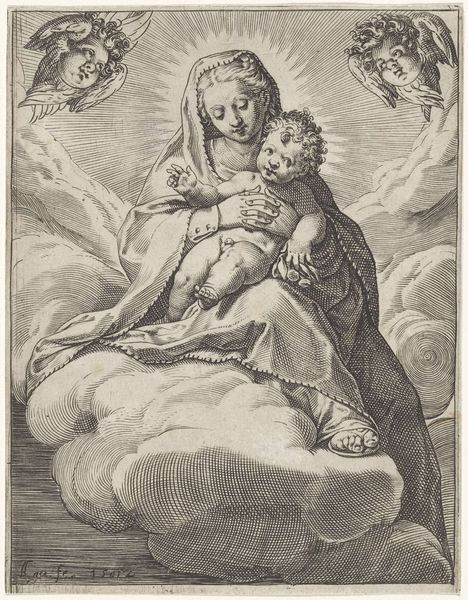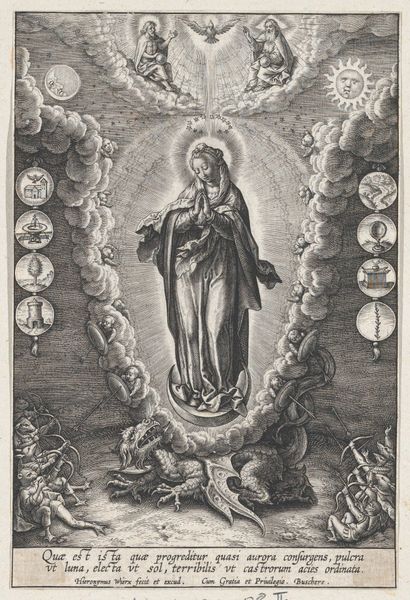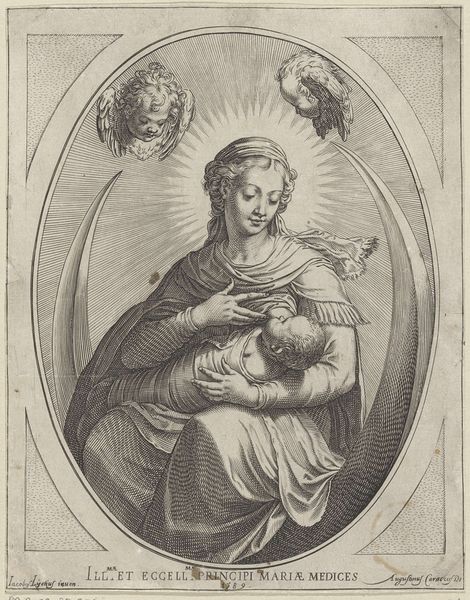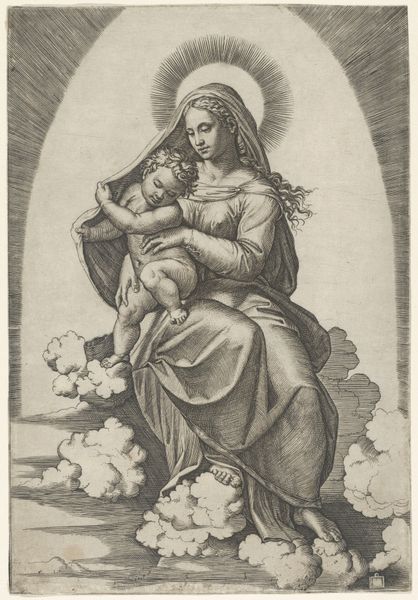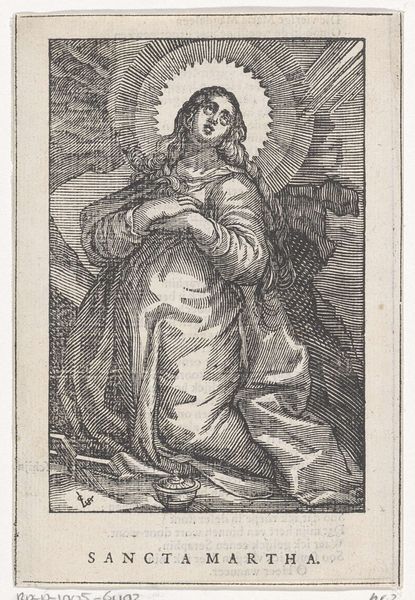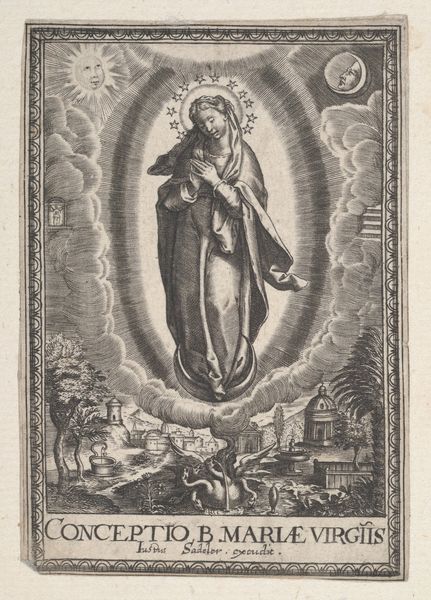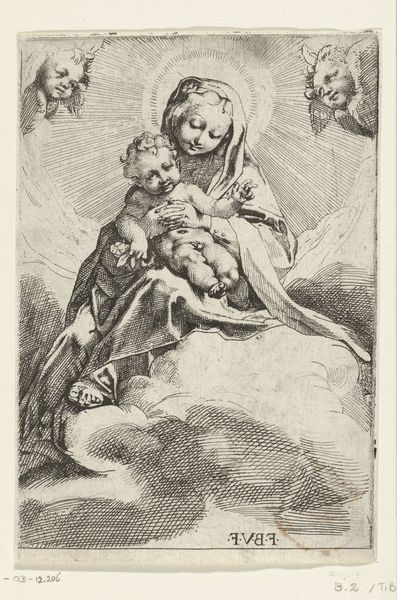
drawing, print, engraving
#
drawing
#
baroque
# print
#
old engraving style
#
surrealism
#
portrait drawing
#
history-painting
#
engraving
Dimensions: height 185 mm, width 139 mm
Copyright: Rijks Museum: Open Domain
Editor: Here we have "Madonna seated on the crescent moon," created after 1625 by an anonymous artist. It’s an engraving, and what strikes me is the dreamlike quality, the way she seems to float amidst the clouds with all those attendant angels. What do you make of it? Curator: The crescent moon itself is an incredibly potent symbol. Long associated with feminine energy, cycles, and the passage of time, it anchors Mary to ancient lunar deities, subtly intertwining Christian and pre-Christian beliefs. Notice how she isn't simply *on* the moon, but enthroned upon it? How does this affect the reading of power? Editor: It suggests that her power transcends the earthly. And those stars… they feel significant too? Curator: Absolutely! The stars, typically twelve in number referencing the Book of Revelation, further elevate Mary, visually associating her with cosmic order. Each element - moon, stars, angels - speaks volumes about her symbolic weight. This image serves not only as a depiction of a mother and child but, moreover, projects Mary as a divine and maternal protector. The act of Mary nursing the child here evokes ideas related to abundance and comfort that are critical for human survival. Editor: So, this image is steeped in layers of historical and religious symbolism designed to create a powerful message. Curator: Precisely. And those symbols resonate even today, triggering deep-seated cultural and emotional connections in those who see it. Images like this become a reservoir of shared understanding and longing. Editor: It is incredible to see how a single image can carry so much inherited significance. I never considered those specific symbolic origins. Curator: Indeed, and it's in this accumulation of meaning across time that these images truly gain their power.
Comments
No comments
Be the first to comment and join the conversation on the ultimate creative platform.

